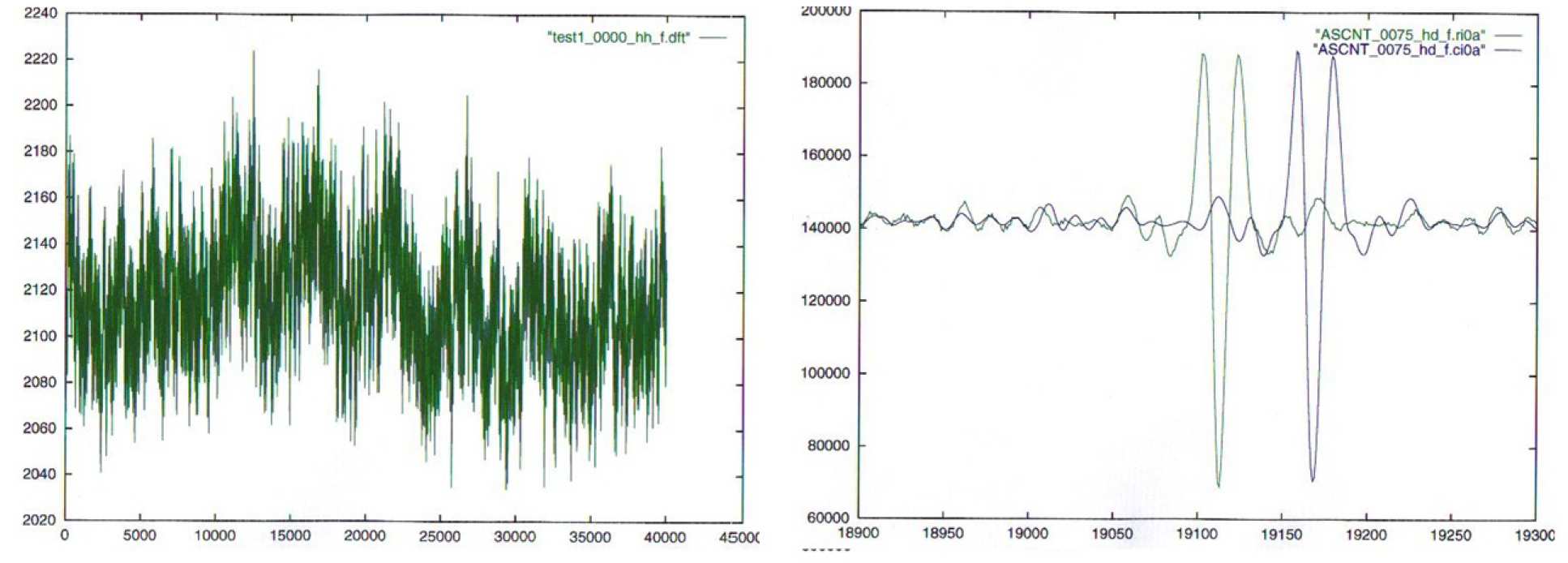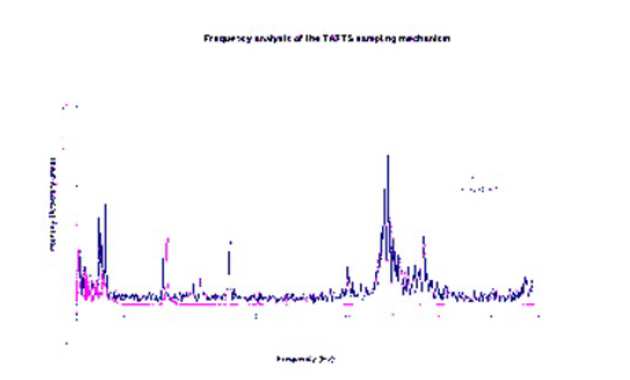TAFTS Interferograms
TAFTS acquires the interferogram on a uniform in time sampling grid, velocity variations in the scan mechanism means that the samples are, therefore, not uniform in space. For the Fourier transform to be effective we require the interferogram to be on a uniform in space grid. To achieve this we use the Brault sampling method. A laser is passed through the interferometer, in an off-set position to the far-infrared signal and a laser fringe detector detects the laser fringe signal. A on-board, 40 MHz, clock is used to record the timings between laser fringes. We make use of these timings to allow us to resample the constant in time interferogram onto a constant in space grid, see figure below.
 Embedded within the laser fringe timing data is a record of the scan velocity variations. One of the neat things we can do is to perform a Fourier analysis of this data to give us information on how the scan mechanism has been affected by the local environment. The figure below shows just such an analysis for tafts sitting in the laboratory and mounted in a C130 at 7.8 km. The difference is startling and was our first indication that the anti-vibration mounts were not giving good enough isolation. Still the fact that the sampling system can detect these effects also means that it was able to correct for them!
Embedded within the laser fringe timing data is a record of the scan velocity variations. One of the neat things we can do is to perform a Fourier analysis of this data to give us information on how the scan mechanism has been affected by the local environment. The figure below shows just such an analysis for tafts sitting in the laboratory and mounted in a C130 at 7.8 km. The difference is startling and was our first indication that the anti-vibration mounts were not giving good enough isolation. Still the fact that the sampling system can detect these effects also means that it was able to correct for them!
Fourier analysis of the laser fringe timings for ground and in-flight data:
